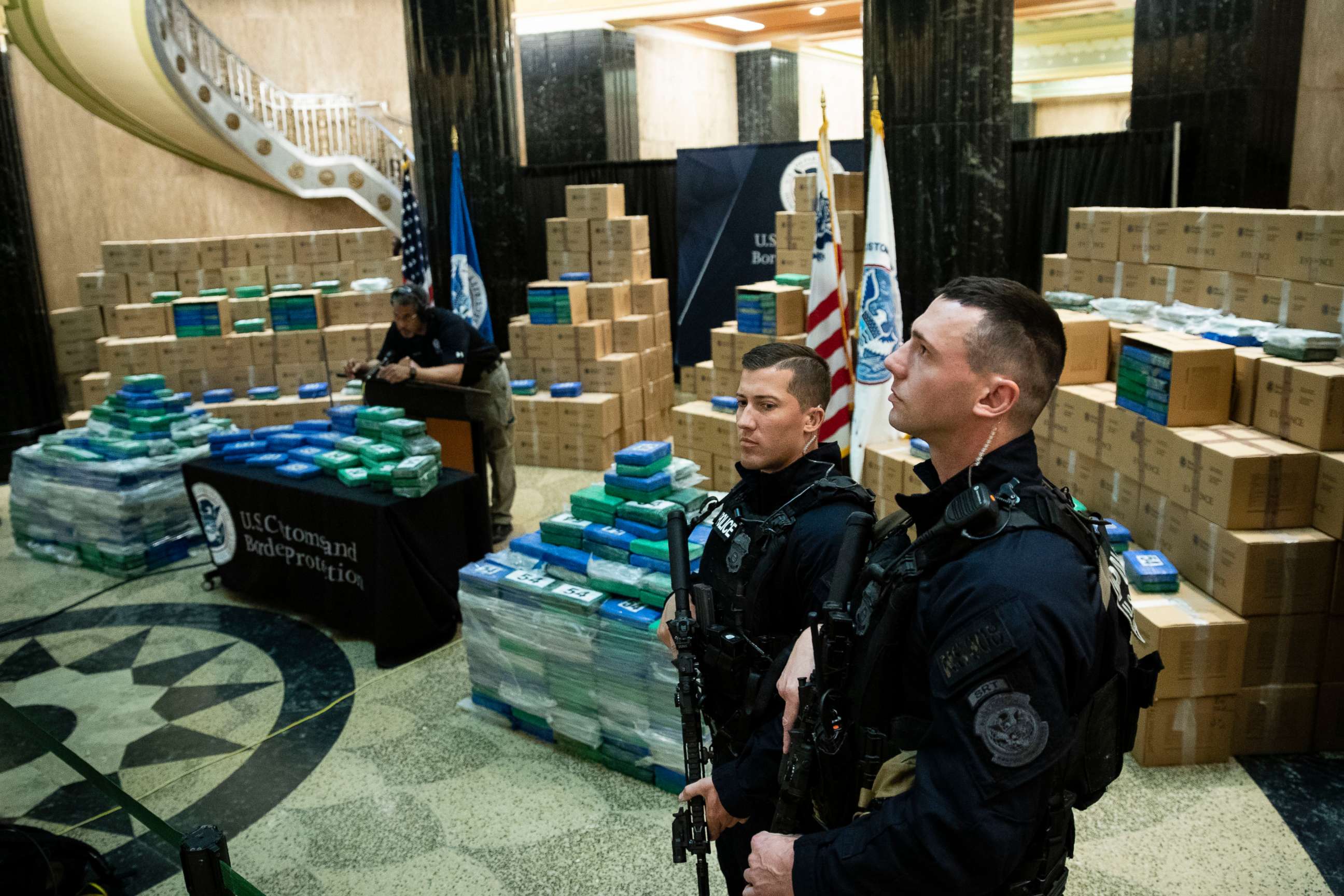Narcotic-detector dogs, X-ray scanner led to the discovery of 15,000 bricks of cocaine in Philadelphia port
The prosecutor said it was "a prime example" of the need for border security.
Six men have been charged in connection with one of the largest drug seizures in U.S. history this week at the port of Philadelphia, where nearly 17 tons of cocaine with a street value of more than $1 billion was confiscated.
None of the men are U.S. citizens and all have been charged with one count of knowingly conspiring to posses cocaine abroad a vessel in a U.S. jurisdiction, which carries the possible sentence of up to life in prison if convicted, U.S. attorney for the Eastern District of Pennsylvania William McSwain told reporters Friday.
"To those who were aboard the ship, and are now in federal custody, I say this: You thought you could breeze into our port and then leave with enough cocaine to destroy millions of lives without getting caught," he said. "You thought you were clever. You were wrong."

McSwain said that the case was "a prime example of why this country needs strong border protection."
"We must do everything we can to dismantle international drug trafficking organizations who destroy the lives of those who are addicted to drugs," he said. "That begins with strong border protection and ends with aggressive prosecution of those who seek to profit from peddling poison."

The MSC Gayane ship, which was the length of three football fields and operated under the flag of Liberia, was escorted into the Philadelphia port after "anomalies" were detected in several of its containers. Further inspections involving fiber-optic scopes, narcotic-detector dogs and an X-ray scanner led to the discovery of 15,000 bricks of cocaine, weighing a total of about 35,000 pounds, officials said at the news conference.
"Laid end to end, all the bricks cover a distance of about two and a half miles," said Casey Durst of the U.S. Customs and Border Protection. "Really, it's just incredible."
McSwain emphasized that he was limited in what he could say "at this early stage in the investigation."

"We're not going to get into the details of how the cocaine got onto the boat and what the plans were," he said.
According to a criminal complaint filed on Tuesday, the MSC Gayne's second mate told investigators that he was told by the ship's chief officer to come down to the deck after the ship departed Peru. He said he saw nets near the ship's crane that contained bags with handles, and that he and four others had hoisted the bags onto the ship and loaded them into containers. He said he had been promised $50,000 for the job, according to the complaint.
Another crew member also told authorities that he assisted in loading bales of cocaine that were brought alongside the ship by smaller boats both before and after they docked in Peru.
By the time all the operations were complete, officials said, $1 billion worth of cocaine was secured, secreted and headed to Philadelphia, where it was ultimately seized and impounded.




